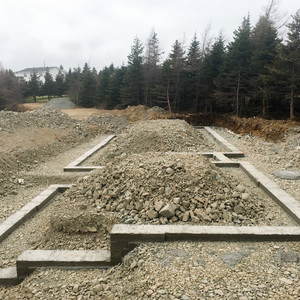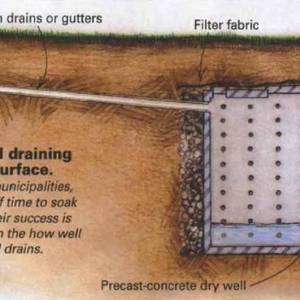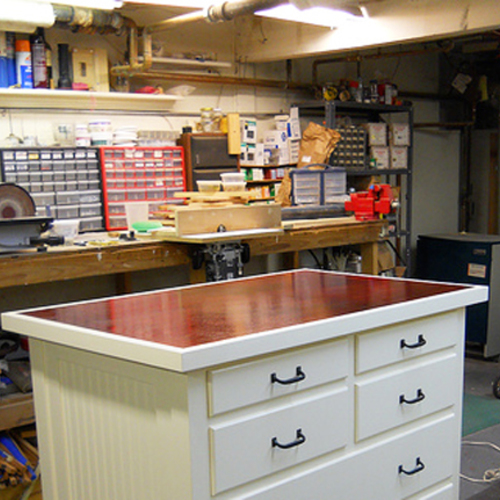
Let’s say you’re planning to build a custom house. Do you care what type of foundation your house will have? Some homeowners leave this decision to the designer or builder. But if you’re reading this article, you’re probably the type of owner who wants to be involved in all the decisions related to your house — which means that you’ll want to learn as much as you can about foundations before making this decision.
In some rural areas of the country, installing a foundation is often a casual affair involving two contractors: an excavation contractor who digs a hole (or prepares the site) and a concrete contractor who sets up forms and places the concrete. In areas with tight regulations, however, as many as six experts may be involved in a residential foundation, including an architect, a structural engineer, a soils engineer, an excavation contractor, a concrete contractor, and a building inspector.
Types of foundations
How many types of foundations are there? There is no agreed-upon system for categorizing foundations, of course, but I’m going to go with six different types.
1. Basement foundation. A basement foundation consists of a full story that is mostly below grade. These days, a basement usually has an 8-foot ceiling, although older basements may have lower ceilings, and some newer basements are 9 feet high. If the basement is built into a hillside, with the uphill side below grade and the downhill side exposed, it is called a “walkout basement.”
Although most new basement foundations have walls made of poured concrete, contractors in some parts of the country still build basement walls from concrete blocks (CMUs). Some older basements have walls made of stone and mortar, unmortared fieldstone, or brick.
A variation on the basement foundation is the permanent wood foundation…
Weekly Newsletter
Get building science and energy efficiency advice, plus special offers, in your inbox.

This article is only available to GBA Prime Members
Sign up for a free trial and get instant access to this article as well as GBA’s complete library of premium articles and construction details.
Start Free TrialAlready a member? Log in















9 Comments
In areas where expansive soils are a problem, either high PVRs or Expansive Index, a Post-Tension, Pier, Beam slabs are used to make whole slab movement as one. Typically the exterior beam is 48" and the interior beams are 36".
Also, Suspended Foundations are another solution available, mainly for commercial buildings, but I know a few builders installed them in houses. See: https://www.tellafirma.com/
Thank you for the overview, Martin.
Obviously, it's not possible in all situations to ensure that the grade around one's foundation is sloping away from the building? Love to see thoughts on bermed buildings and foundations incorporated somewhere, as they're quite common in certain areas of the republic.
Gregg,
You wrote, "Obviously, it's not possible in all situations to ensure that the grade around one's foundation is sloping away from the building."
You're probably correct -- not in all situations, especially if you are building on a site where grading with a bulldozer or blasting is impossible or prohibited. But most building sites can -- and should -- be graded, usually with a bulldozer. For more information, see "Zen and the Art of Grading."
If you are building on a slope, the area that is uphill from the foundation needs to be formed into a swale. This will ensure that the grade slopes away from the foundation in all four directions.
Novice builders sometimes tell their excavation contractor to dig a "very deep hole" for their basement. If that's done, you often end up with a building that is located at the bottom of a hole or in what amounts to a shallow pan.
Instead, it's much better to dig a hole that is not so deep, and use the excavated soil to backfill the foundation walls. Better a house which sits on a small rise than a house in a hole.
Much of this is timely since I’m planning a small cabin in WI northwoods. I’m trying to weigh the pros and cons for slab, crawlspace, and basement options. While I understand the advantages of a slab, I wonder whether other objections have merit.
It could mean a larger footprint in order to accommodate space for utilities. (I realize this may or may not be offset by the space needed for crawlspace access or a stairway.)
Although I only have my existing home’s basement as reference, I find it uncomfortable to spend much time on a concrete floor. If added, resilient flooring would appear to be needed, why not a regular floor on joists to begin with?
Repairs and/or modifications in the future would seem to be more problematic and expensive.
It offers no place for refuge in severe weather. When possible, some of us in campers and tents will hurry to a nearby relative with a basement when the alarm sounds.
Based on this line of thought, a crawlspace starts to look good. But then my contractor indicates it would be constructed very similar to a basement - except for depth - so why not go deeper and pay the extra cost to get another potentially usable floor with the same footprint? And having some of the volume below frost depth also seems to be an advantage if the grid is down for long periods.
So the idea of a simple cabin in the woods ends up looking not so simple, but hopefully I’ll get over the sticker shock and pursue final planning.
The building site is essentially pure clay, so my next issue is related to your recommendations for backfill. After living in a clay environment for many years, my first preference would be to completely remove and truck away any excavated and disturbed clay. This clay takes many years to settle, is difficult to work with, and it has to be immediately covered with something to prevent gathering several pounds on each foot with each step. In some travelled areas, surface sands and gravel just keep sinking over time and it’s best to excavate and lay landscape fabric on the clay before replacing gravel. Do you have a suggestion for backfilling in this situation? Would a vertical layer of fabric be valuable? (My contractor would go with all sand unless there’s something else I can persuade him to use.)
Walter,
Q. "Do you have a suggestion for backfilling in this situation?"
A. I would accept local advice. The type of material available at your local gravel quarry is likely entirely different from the materials commonly sold in Vermont. If you use sand for backfill, there is no reason for the sand to "keep sinking over time."
A good material for backfill available were I live in Vermont is called "bank-run gravel." It's a mixture of stones and sand. If some of these stones are too large -- so large as to be unwieldy -- it's possible to order "crusher run gravel" -- bank-run gravel that as been processed through a crusher. For example, "three-quarter crusher run" has rocks that fit through a 3/4-inch screen (and none larger).
It's possible that these local Vermont terms aren't used at Wisconsin quarries. Call up your local gravel quarry and ask what local builders use for backfill.
"a crawlspace starts to look good. But then my contractor indicates it would be constructed very similar to a basement - except for depth"
The "except for depth" bit shouldn't be dismissed too quickly. A full height basement uses a lot more materials than a crawlspace, and is more complex to build.
- Going deeper means water management becomes much more important, especially as the consequences of leaks are much more severe when the space is finished. Water management also become more difficult the further below grade you go.
- Codes typically allow foundation walls up to eight feet high to be re-enforced one way and those higher than that require more extensive rebar. You need an almost nine foot foundation wall to yield an eight foot finished basement.
- Basements also typically have insulated, framed exterior walls, rather than the rigid foam lining crawlspaces.
- After all that effort basements usually yield poor quality, dark, finished space.
Some of these problems (especially the last one) can be mitigated if the site slopes and part of the basement is closer to grade. Another option is to half-bury the basement, and frame knee-walls above, allowing for windows and minimizing the depth of excavation. That works well unless the house design relies on a close relationship between the main-floor and the surrounding landscape.
Clay soils also have a bunch of special required treatments for expansion/contraction of the clay, and a whole host of water issues. If it's really just solid clay, I would build on pilings. If the site slopes enough that your foundation drains can run to daylight, you could try a crawl space or basement foundation, but you're still going to need engineering.
We are using helical posts for a new build residence (soil survey and engineering report confirmed the required technique). We are also trying to minimize disruption on the site, thus prefer no/minimal concrete. We plan to use iron beams on the posts with floor SIPs, and then conventional framing above. We have found nothing in the code that requires either a skirting or a crawl space although it's obvious we have to build some kind of small protected chase to go from the house down below frost level for the water/sewer connection. Is there a recommended method for such an insulated 'chase' in this situation?
User...191,
Making the chase large enough, say 3'-0" square, and leaving the top open, allows the chase to be heated by the house, rather than relying on a separate source. Ideally the chase is built out of concrete and lined with rigid insulation. If you want to avoid concrete , frame it out of ground-rated Pt lumber down to the depth of the frost.
Log in or become a member to post a comment.
Sign up Log in